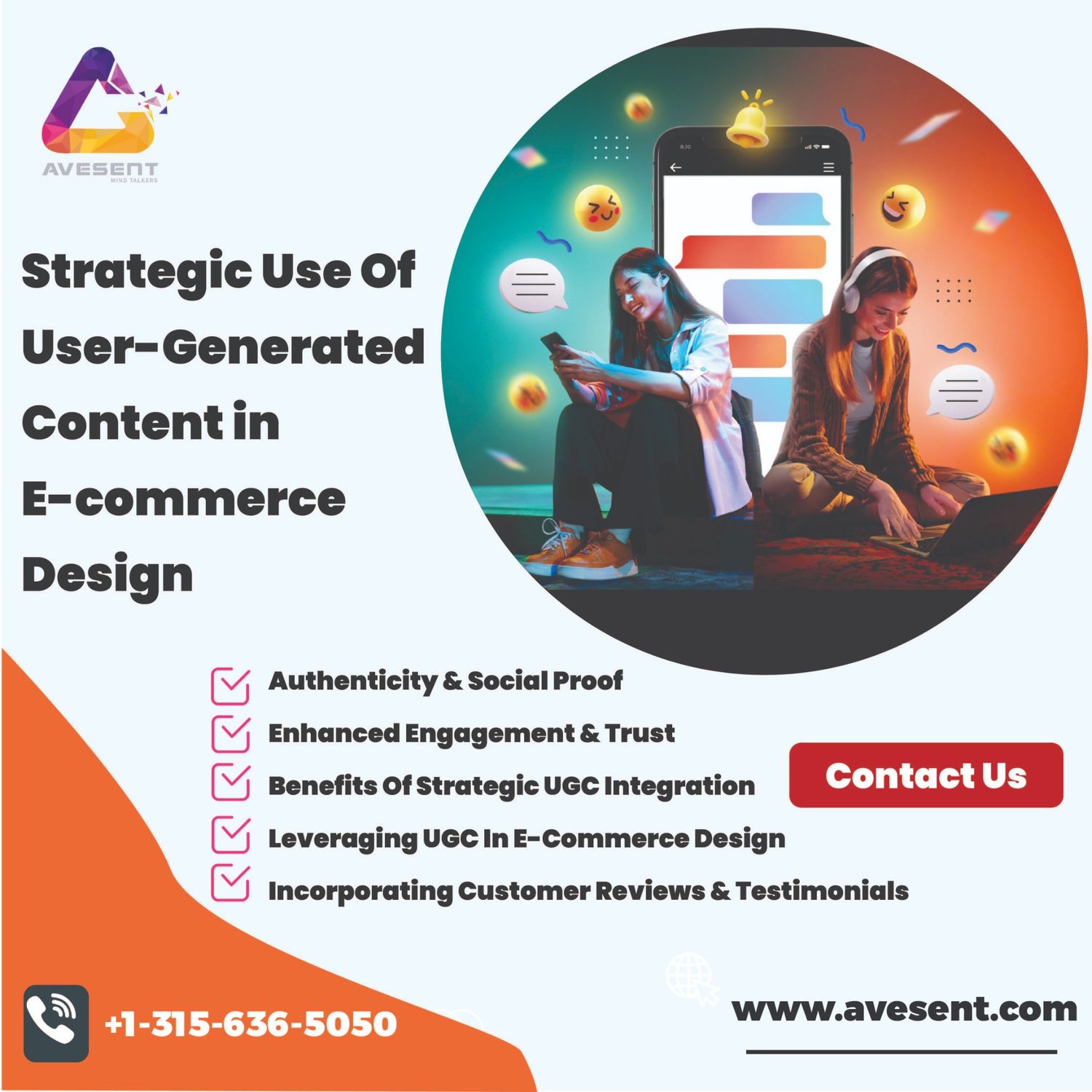Harnessing the Power of User-Generated Content in E-commerce Design: A Strategic Approach for Digital Marketing Agencies in India
User-Generated Content (UGC) has become a driving force behind successful e-commerce ventures, shaping consumer perceptions and purchase decisions. For digital marketing agencies in India, integrating UGC strategically into e-commerce design isn’t just about leveraging customer content; it’s about fostering authenticity, engagement, and trust. Let’s explore how the strategic use of UGC in e-commerce design is reshaping the online shopping experience and its significance for digital marketing agencies in India.
The Influence of User-Generated Content in E-commerce
1. Authenticity and Social Proof
UGC, such as customer reviews, images, and testimonials, provides authentic feedback and social proof. This content influences potential buyers by showcasing real experiences and building trust.
2. Enhanced Engagement and Trust
User-generated visuals and stories engage shoppers more effectively than brand-generated content. UGC fosters a sense of community and trust among potential customers.
Leveraging UGC in E-commerce Design
1. Showcasing Real-Life Product Usage
Integrating customer-generated images or videos of products being used in real life adds authenticity. Digital marketing agencies in India curate these visuals to showcase products in relatable contexts.
2. Incorporating Customer Reviews and Testimonials
Highlighting customer reviews and testimonials throughout the e-commerce platform reinforces credibility. Agencies strategically place UGC to influence purchasing decisions positively.
Benefits of Strategic UGC Integration
1. Increased Conversion Rates
UGC impacts purchasing decisions, leading to higher conversion rates. E-commerce designs that strategically incorporate UGC witness increased sales due to enhanced trust and authenticity.
2. Strengthened Brand Loyalty
Encouraging customer participation and showcasing their content fosters brand loyalty. Digital marketing agencies in India curate UGC to create a sense of belonging among customers.
Strategies for Effectively Using UGC in E-commerce Design
1. Curating High-Quality UGC
Selecting and curating the most relevant and high-quality UGC ensures its effectiveness. Agencies filter and display content that aligns with brand aesthetics and resonates with the target audience.
2. Encouraging User Participation
Actively encouraging customers to share their experiences through contests, hashtags, or dedicated UGC campaigns boosts participation. Digital marketing agencies in India create incentives to motivate customers to contribute.
Overcoming Challenges in UGC Integration
1. Ensuring Quality and Moderation
Maintaining quality control and moderating UGC are essential. Agencies use moderation tools and guidelines to filter out inappropriate or irrelevant content.
2. Aligning UGC with Brand Image
Harmonizing UGC with the brand’s image and values is crucial. Digital marketing agencies in India curate content that reflects the brand’s identity and resonates with its audience.
Future of UGC in E-commerce for Digital Marketing Agencies
1. AI and UGC Integration
AI-driven tools will aid in efficiently sorting and utilizing UGC. Agencies will leverage AI to streamline UGC curation and enhance its impact on e-commerce designs.
2. Evolving UGC Trends
Evolving trends, such as live streaming and interactive content, will shape the future of UGC. Agencies in India will adapt strategies to incorporate emerging UGC formats into e-commerce designs.
Conclusion
For digital marketing agencies in India, the strategic integration of UGC into e-commerce design isn’t just about using customer content; it’s about leveraging the power of authentic storytelling and social proof. By incorporating UGC effectively, these agencies create immersive online shopping experiences that foster trust, engagement, and brand loyalty.





